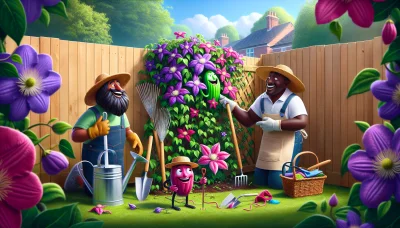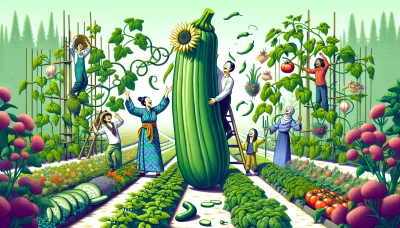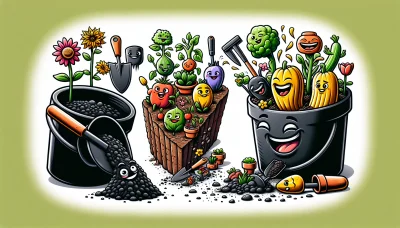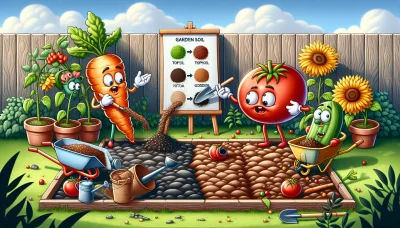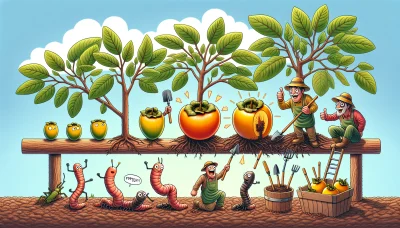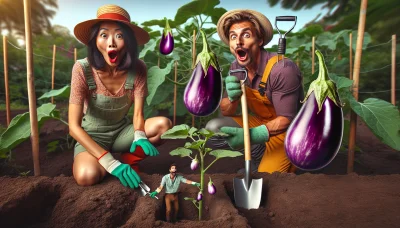Nephelium lappaceum Quiz
Test Your Knowledge
Question of
Introduction to Nephelium Lappaceum
Nephelium Lappaceum, commonly known as Rambutan, is a tropical fruit tree species belonging to the family Sapindaceae. The fruit is notable for its hairy appearance, with a sweet and juicy flesh that is often compared to the lychee. Rambutan is native to Southeast Asia and is widely cultivated in various tropical regions around the world, where it is enjoyed fresh or used in a variety of culinary dishes.
The Origin and History of Nephelium Lappaceum
Nephelium Lappaceum, commonly known as rambutan, is a tropical fruit tree native to Southeast Asia. Its origins trace back to the Indonesian archipelago and the Malay Peninsula, where it has been cultivated for centuries. The name 'rambutan' is derived from the Malay word 'rambut', meaning hair, a reference to the fruit's distinctive hairy appearance. Historically, rambutan has played a significant role in the local diets and economies of its native regions, being both a source of nutrition and a commodity for trade. The spread of rambutan across the world began with its introduction to other tropical regions through exploration and trade. It was brought to parts of Africa, South America, and Central America, where it thrived in the similar tropical climates. Today, rambutan is grown in various tropical countries around the globe, making it a cherished fruit for its sweet and juicy flavor.
How to Grow Nephelium Lappaceum
- Choosing a Suitable Location: Find a location that receives full sunlight for most of the day. Nephelium Lappaceum thrives in warm, tropical climates.
- Soil Preparation: Ensure the soil is well-draining with a pH between 4.5 and 5.5. Enrich the soil with organic compost before planting.
- Planting: Plant seeds or saplings during the warmer months. If planting multiple trees, space them at least 30 feet apart to accommodate their growth.
- Watering: Water the plant regularly to keep the soil moist, especially during dry periods. However, avoid waterlogging as this can lead to root rot.
- Fertilizing: Use a balanced fertilizer every 3-4 months to provide necessary nutrients for growth. Organic options like compost or manure are also beneficial.
- Pruning: Prune the tree in the late winter or early spring to remove any dead or overcrowded branches and to encourage healthy growth.
- Pest and Disease Management: Monitor for common pests such as mites and scale insects. Use organic pesticides if necessary and remove any diseased parts of the plant promptly.
- Harvesting: Nephelium Lappaceum fruits are ready to harvest when they turn from green to red and are slightly soft to the touch. Use caution as the fruit has a hairy exterior that can irritate the skin.
Common Challenges in Growing Nephelium Lappaceum
Nephelium Lappaceum, commonly known as Rambutan, is susceptible to a variety of pests and diseases that can hinder its growth and fruit production. One of the most common pests affecting Nephelium Lappaceum is the fruit borer, which lays eggs inside the fruit, causing it to rot. To combat this, growers can use pheromone traps to monitor and reduce fruit borer populations. Another significant challenge is the attack by fungal diseases such as anthracnose, which causes dark, sunken lesions on fruits and leaves. Applying fungicides and ensuring good air circulation around the plants can help manage anthracnose. Additionally, root rot caused by overwatering or poor drainage can severely affect Nephelium Lappaceum. Ensuring proper drainage and watering practices are essential to prevent this condition. Regular monitoring and adopting integrated pest management practices can significantly help in mitigating these challenges and ensuring the healthy growth of Nephelium Lappaceum.
Harvesting and Using Nephelium Lappaceum
The best time to harvest Rambutan, known scientifically as Nephelium Lappaceum, is when the fruit's skin turns from green to a vibrant red or yellow, indicating ripeness. This typically occurs approximately 15-18 weeks after flowering. Harvesting should be done carefully by cutting the fruit cluster with a sharp knife or secateurs to avoid damaging the fruit and the tree. Once harvested, Rambutan can be used in a variety of culinary applications. It is commonly eaten fresh, with the creamy, sweet, and slightly acidic flesh being a popular treat. The fruit can also be used in salads, desserts, and cocktails for a tropical flavor. Nutritionally, Rambutan is rich in vitamin C, fiber, and other antioxidants, making it a healthy addition to any diet.
Environmental Benefits of Growing Nephelium Lappaceum
Nephelium Lappaceum, commonly known as Rambutan, is not only cherished for its succulent fruit but also plays a significant role in enhancing environmental health. By integrating Nephelium Lappaceum into agricultural systems, we can support biodiversity in several ways. Firstly, its dense canopy provides a habitat for a variety of bird species, insects, and other fauna, contributing to an increase in local biodiversity. This is crucial for maintaining ecological balance and ensuring the survival of various species. Additionally, Nephelium Lappaceum trees have a positive impact on the soil. Their root systems help in preventing soil erosion, a critical issue in many agricultural regions. Moreover, the leaf litter from these trees enriches the soil by adding organic matter, which improves soil fertility and promotes healthier plant growth. As a result, growing Nephelium Lappaceum can contribute to sustainable agricultural practices, supporting both the environment and the economy.
Conclusion: The Joy of Growing Nephelium Lappaceum
Growing Nephelium Lappaceum, more commonly known as the Rambutan, is an incredibly rewarding experience that offers a multitude of joys and benefits. Not only does this exotic fruit bring a unique aesthetic appeal to your garden with its vibrant colors and unusual texture, but it also provides a delicious and nutritious harvest. The process of nurturing these plants from seedlings to fruit-bearing trees can be a deeply fulfilling journey, offering a tangible connection to nature and the satisfaction of cultivating your own food. Moreover, the Rambutan tree's lush foliage can serve as a beautiful addition to your garden, creating a tropical ambiance right in your backyard. Whether you are a seasoned gardener or a curious beginner, planting Nephelium Lappaceum can be a delightful adventure that enriches your gardening experience and broadens your horticultural horizons. We encourage everyone to consider adding this wonderful fruit tree to their garden, embracing the joy and abundance it brings.



